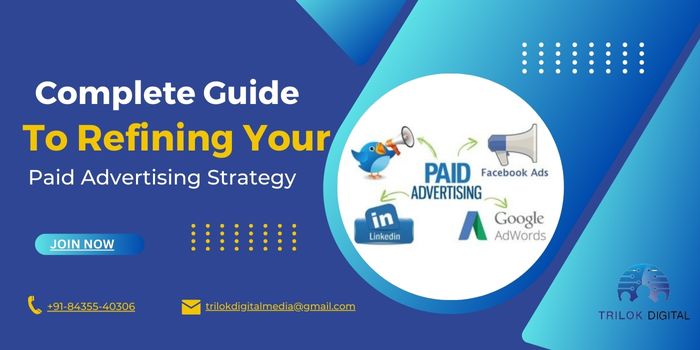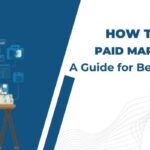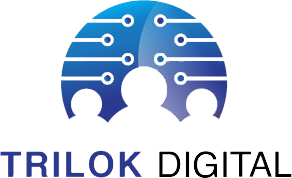Making your Paid Advertising Strategy works better can save money and time while making more money from them. But how can you make this happen? Paid ads are like a shortcut in marketing, meant to get quick results.
But the truth is, while paid ads can be really good, you have to plan them out well. You need to have a clear plan, enough money to run the ads, and clear goals. Also, you need to track how well your ads are doing.
Doing paid ads the right way is like creating a masterpiece. It might seem hard, but it’s doable whether you’re part of a big marketing team or doing a lot of marketing jobs by yourself.
In this blog, we’ll delve into the essential tips, tactics, and best practices that will supercharge your campaigns, ensuring they not only attract the right audience but also drive tangible results for your business.
What is Paid Advertising Strategy
A paid advertising strategy is when a company pays to show ads to specific groups of people. They pick who sees the ads based on things like age, interests, and what they’ve done before.
The way they choose the places to show the ads and the kind of ads they make is what we mean by their ‘paid strategy.’ Having a smart plan for this can really help a business succeed and bring in more money.
We’re going to talk about paying for advertising and how to do it effectively. We’ll cover:
- Whether paying for ads matches your goals
- How to decide how much money to spend on ads
- The best places to put your ads
- Tips to make your advertising strategy better
- How Ruler can assist you in making your paid ads work even better
It’s also sometimes called ‘biddable media’ or ‘PPC advertising.’ PPC stands for Pay-Per-Click because you pay each time someone clicks on your ad.
This is different from earned or owned advertising, where you can share your content for free on platforms like Facebook or LinkedIn.
Tips for a Successful Paid Advertising Strategy
- Set Your Goals: Before you begin advertising, figure out what you want to achieve with your ads. Knowing your goals will help you plan better.
- Know Your Audience: Think about who your customers are in terms of age, gender, and location. Also, understand their interests and what motivates them to buy your product.
- Choose the Right Platform: Decide where you want to advertise. Social media is a good place to start if you’re not there already.
- Create Your Ad Content: Make your ads interesting by using the right images and text. Offer something valuable to your potential customers.
- Make a Landing Page: Create a special webpage that people will see after clicking your ad. This page should guide them on what to do next.
- Offer Something Special: Give your customers a good reason to buy from you. Offer discounts, free trials, or special deals.
- Use Specific Keywords: Use keywords that are unique and specific to your product. They’ll help you reach the right audience.
- Target Your Audience: Make sure your ads are shown to the people who are most likely to buy from you.
- Repurpose Organic Content: You can turn your regular social media posts into ads. It’s a time-saver and can improve your reach.
- Test Your Ads: Experiment with different elements in your ads to see what works best. This could be the text, images, or even the type of ad.
- Review and Improve: Keep an eye on how your ads are doing. Check important numbers like click-through rates and costs. Make changes to improve your results.
Remember, Paid Advertising Strategy is about reaching the right people with the right message to achieve your goals.
How We Handle Our Paid Advertising Strategy
At Trilok Digital media, we’re fortunate to have detailed data about our marketing efforts. We use this data to make smart choices in our advertising since we can connect website visitors to actual sales in our records.
What is paid marketing?
Paid marketing, also called digital advertising, means a brand tries to reach people who might be interested in their stuff. They do this by looking at what people like, what they’re looking for, or if they’ve seen the brand before.
These ads can show up on the internet in different places like when you search for something on Google, when you’re on social media, or when you visit websites. You’ve probably seen ads on Google search results or websites. But there are also ads that look like regular social media posts and articles written by the brand on other websites.
Here are some key components of a paid marketing strategy:
1Marketing Mix (The 4 Ps of Marketing)
- Product: What are you selling?
- Price: How much does it cost?
- Place: Where will you sell it?
- Promotion: How will you promote it?
Basically, understand what you’re selling, how much it’ll cost, where you’ll sell it, and how you’ll tell people about it. This helps plan your marketing strategy.
2 Marketing Objectives:
Set clear goals for marketing. Be specific and make goals that are achievable. Goals guide your marketing plans and help with budget and content creation.
3 Marketing Budget:
Allocate money for hiring, advertising, software, and content creation. Investing in these areas is crucial for a successful marketing strategy. Start small and expand as you see good results.
4 Competitive Analysis:
Know your competition well. Understand what makes you different from them and how to get your target audience’s attention.
5 Segmentation, Targeting, and Positioning (STP):
Understand your audience through research and interviews. Tailor your message to a specific, interested group rather than everyone. Show what makes your brand better than others.
6 Content Creation:
Create strategic content that solves customer problems and follows current trends. Videos, images, blogs, and infographics are popular. Invest in what gives the best return on investment.
7 Metrics & Key Performance Indicators (KPIs):
Track and measure your marketing efforts. Use metrics like Customer Acquisition Cost, Organic Traffic, Conversion Rate, and Marketing Qualified Leads to see how well your strategies are working.
Remember, it’s about knowing what you’re selling, who you’re selling to, how you’ll sell it, and how you’ll measure your success!
A well-executed paid marketing strategy can help businesses reach a broader audience, increase brand visibility, drive traffic to their websites, and ultimately achieve their marketing goals.
What is Amazon PPC advertising?
Amazon Pay-per-Click (PPC) advertising is a tool Amazon offers to businesses and sellers. With Amazon PPC, they can make ads for their products that show up when people search on Amazon. These ads can appear in search results or on pages where similar products are listed. This helps sellers show their products to people who are already looking to buy something on Amazon.
After showing these ads, sellers can check how well they’re doing. They can see which ads are helping them sell more. Many Amazon sellers use this technique because it works really well for them. In fact, three out of four sellers on Amazon, no matter how big or small, use Amazon PPC to promote their products.
Here’s how Amazon PPC advertising generally works:
Let’s first understand the important numbers Amazon uses to measure PPC performance.
- Advertising Cost of Sales (ACoS): ACoS is like a percentage that tells you how much of your sales money you spent on advertising. For example, if you spent $4 on ads and those ads led to $20 in sales, your ACoS would be 20%.
- Attributed Sales: This is the total sales of your product that happen within one week after people clicked on your ads. But it might take about 48 hours for this sales data to show up, so you won’t see sales for today; you might have to wait until tomorrow to see them. You can check the sales for the products you advertised in the Campaign Performance report.
- Impressions: Impressions simply mean how many times your ads were shown to people. Sometimes, it takes a few days to filter out any fake or invalid clicks from these numbers.
- Clicks: This tells you how many times people clicked on your ads. Just like with impressions, it may take a few days to remove any fake or invalid clicks from this count. So, if you check clicks from the last three days, the number might change if some clicks turn out to be invalid.
Amazon PPC advertising is a valuable tool for sellers and vendors looking to increase visibility for their products, drive traffic to their product pages, and boost sales on the Amazon platform.
It allows advertisers to target shoppers who are actively searching for products similar to theirs, making it a highly targeted and efficient advertising method within the Amazon ecosystem.
What is PPC search engine?
PPC search engine advertising is a type of online advertising where businesses pay to have their ads shown on search engine results pages. They bid on certain keywords or phrases related to their products or services, and when people search for those terms, their ads appear at the top or bottom of the search results.
This way, businesses can reach potential customers who are actively looking for what they offer. Popular search engines like Google and Bing use this advertising model.
Here’s how PPC search engine advertising works:
Keyword Bidding
Advertisers research relevant keywords that users might use to find products or services similar to theirs. They then bid on those keywords, indicating the maximum amount they are willing to pay for a click on their ad when someone searches for that keyword.
Ad Auction
When a user enters a search query into the search engine, the ad auction takes place. The search engine’s algorithm evaluates bids, ad relevance, and other factors to determine which ads will appear on the SERPs for that specific search query.
Ad Placement
The winning ads appear either above or below the organic search results. These ads are often marked as “Ad” or “Sponsored” to distinguish them from the organic listings.
Cost Per Click (CPC)
With PPC advertising, advertisers only pay when someone clicks on their ad, not when the ad is displayed (impression-based). The actual cost per click is determined by the bid and ad rank of the advertiser.
Ad Copy
Advertisers create ad copy that includes a headline, description, and display URL. The ad copy should be relevant to the keywords and entice users to click on the ad.
Landing Pages
Clicking on the ad takes the user to a designated landing page on the advertiser’s website. The landing page should be relevant to the ad and offer valuable information or products/services related to the user’s search intent.
Performance Tracking and Optimization
Advertisers use analytics and conversion tracking tools to measure the performance of their ads. They can adjust bids, keywords, and ad copy based on performance data to improve the effectiveness of their campaigns.
PPC search engine advertising allows businesses to target potential customers actively searching for products or services, making it a highly relevant and efficient form of online advertising.
It offers advertisers control over their budget, targeting options, and the ability to reach a vast audience across various industries and locations.
Google Ads is one of the most popular and widely used platforms for PPC search engine advertising, but other search engines like Bing Ads also offer similar advertising opportunities.
What do you mean by social media advertising?
Social media advertising is a way for businesses and individuals to promote their products, services, or ideas on social media platforms like Facebook, Instagram, Twitter, and others.
It involves creating eye-catching ads, targeting specific audiences based on interests and demographics, and paying to display the ads to those users. These ads can appear in users’ feeds, stories, or as sponsored posts.
Social media advertising helps reach a large number of people, increase brand awareness, and drive traffic to websites or online stores.
It’s a powerful tool for businesses to connect with potential customers and engage with their audience in a more personal way.
What is the use of Google Ads?
Google Ads is a tool from Google that lets businesses put up ads on Google’s search results and other websites and apps connected to Google. It’s an online advertising platform where businesses can promote their products or services to reach more people online.
With Google Ads, advertisers bid on specific keywords, and when users search for those keywords, the ads are displayed at the top or bottom of the search results. These ads can also appear on relevant websites or apps, making it possible for businesses to reach their target audience across various online platforms.
With Google Ads, you only pay when someone clicks on your ad. It’s like a “pay-per-click” system. So, you don’t have to pay just for showing the ad; you only pay when someone takes action and clicks on it.
It is an effective way for businesses to increase website traffic, generate leads, and drive sales by reaching potential customers who are actively searching for products or services related to their offerings.
We hope that you found the information provided here valuable and insightful. By implementing the tips and best practices discussed in this blog, we believe you can elevate your paid advertising efforts and achieve better results for your business.
Thank you for taking the time to read this complete guide on refining your paid advertising strategy.
If you have any questions or need further assistance, feel free to reach out. Wishing you all the success in your paid advertising endeavors!




